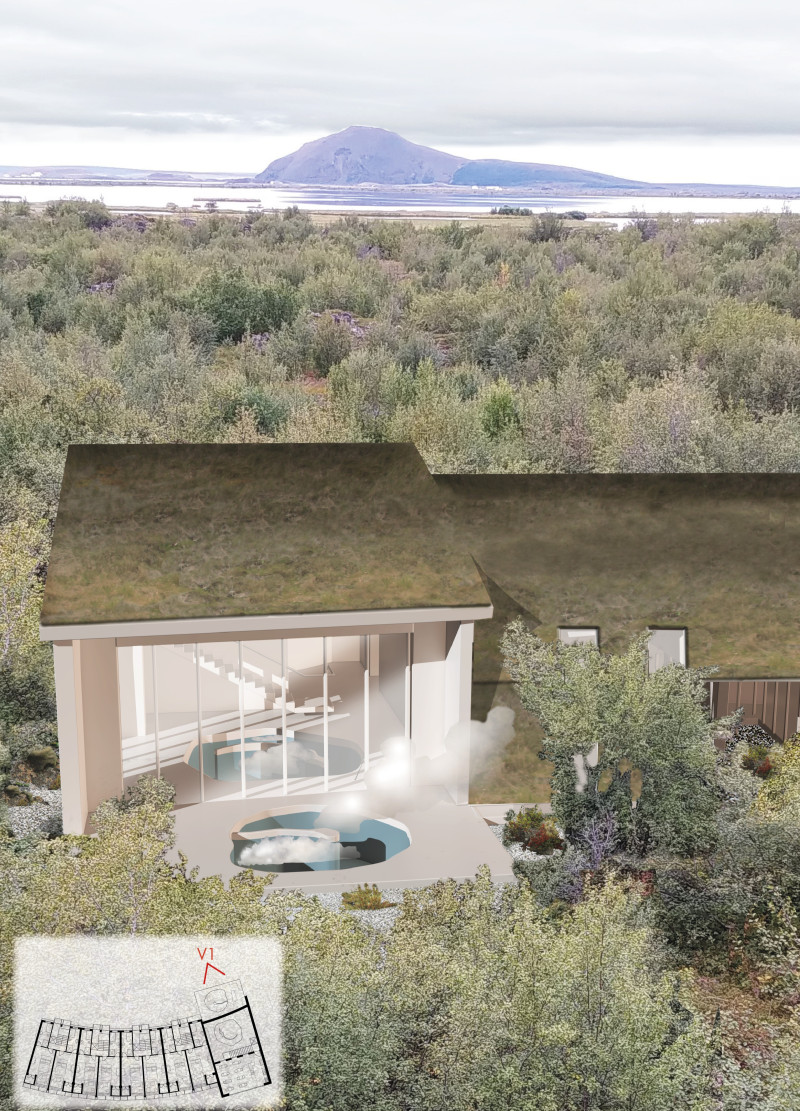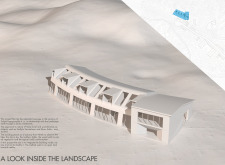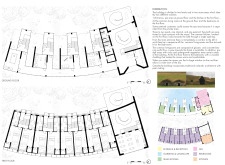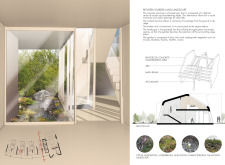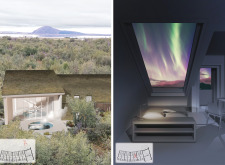5 key facts about this project
The setting in Suður-Þingeyjarsýsla, Iceland, serves as a backdrop for a design that focuses on connecting nature with built spaces. The architecture aims to engage users with the surrounding environment, featuring views of the lake, starry sky, and varied vegetation. The concept positions the structure as an observational platform, inviting a deeper interaction with the landscape.
Design Approach
The overall design is based on a philosophy of harmony between architecture and nature. The building is arranged into two levels with distinct areas for public and private functions. The ground floor features the main entrance, a spa area, and communal living rooms. These spaces utilize large glass and concrete walls to maximize views of the adjacent forest. The transparency of the walls encourages a visual connection to the landscape outside.
Living Spaces
On the first floor, the design turns to private areas, creating bedrooms that feel warm and inviting. Wooden cladding adds a layer of comfort. Each bedroom includes a roof window that frames views of the sky, allowing natural light to flood in. This setup ensures that occupants feel both private and connected to the outside world.
Connection with Nature
Two pools—one inside and one outside—are strategically located to blur the lines between the building and its natural surroundings. This placement enhances the experience of being in nature while offering distinct spaces for relaxation. The design maintains a balance, allowing external visitors access to the spa while keeping residential areas private.
Material Use
Materials play an important role in defining the character of the space. Glass, concrete, and wood are used thoughtfully, showcasing modern building methods while respecting traditional Icelandic architecture through the use of peat roofing. The design also incorporates local vegetation and natural features to connect the building with its environment.
Elements such as garden areas with rocks and undergrowth extend into living spaces. This integration fosters a strong sense of place and encourages a continuous relationship with the landscape.


